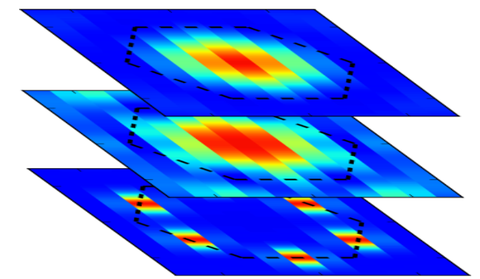Oct 24, 2017
Research: Dynamics of the Kitaev-Heisenberg Model

Dynamical spin structure factor S(k,w) at three different energies for the Kitaev-Heisenberg model obtained using large scale dynamical DMRG simulations.
Quantum spin liquids (QSL) are as fascinating as they are hard to detect: they lack local order parameters and are instead characterized in terms of emergent gauge fields. On the experimental side, spectroscopic measurements provide particularly useful insights into such systems, in particular by probing the fractionalized excitations (e.g., using neutron scattering experiments). On the theoretical side, determining the ground state properties of such quantum spin models is already a hard problem, and it is even more challenging to understand the dynamics of local excitations.
Gohlke et al. introduced an efficient matrix-product states (MPS) based dynamical algorithm to obtain the response functions for generic two-dimensional spin systems. For the paradigmatic Kitaev-Heisenberg model, they reveal several features beyond spin-wave theory even in the ordered phases, providing a more detailed picture for the concept of a proximate spin liquid as potentially realized in α-RuCl3.
M. Gohlke, R. Verresen, R. Moessner, F. Pollmann,
Dynamics of the Kitaev-Heisenberg Model,
Phys. Rev. Lett. 119, 157203 (2017)
